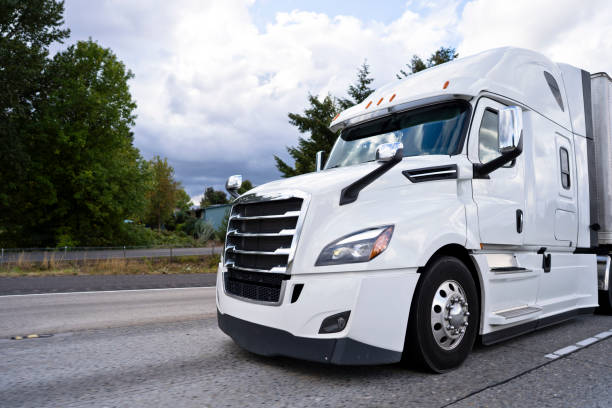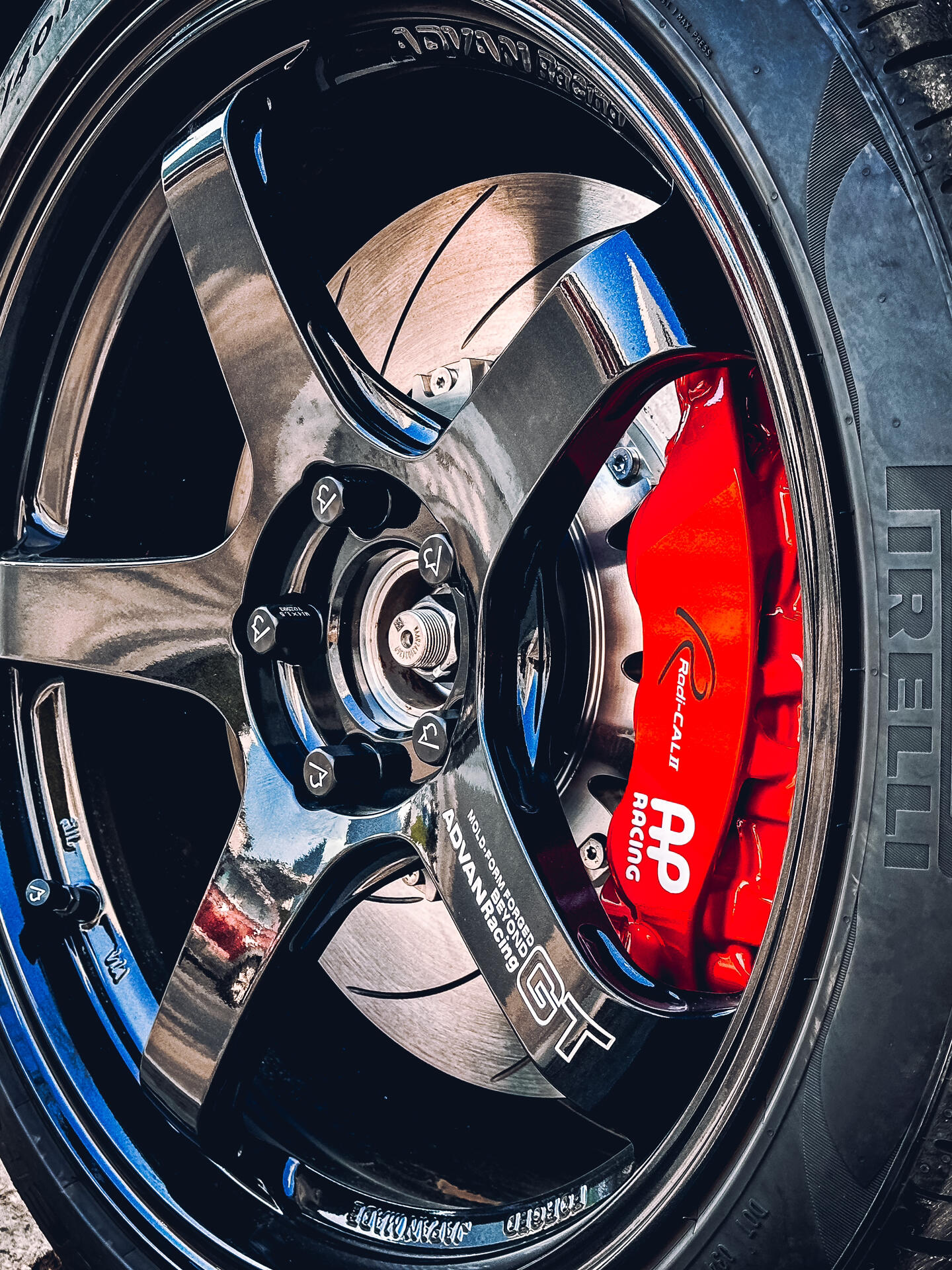Analysis of Wheel Rim Types: Unlocking the Key Codes for Vehicle Safety and Handling
Different types of rims, due to their unique structural designs, are suitable for various vehicle uses and driving scenarios. Today, let's delve into the mysteries of rim type structures.
Deep - Channel Rim (DC): The Trusted Assistant for Small Vehicles
The deep – channel rim is abbreviated as DC (Deep Channel Rim) in English. Structurally, its most prominent feature is a deep groove in the middle of the cross – section. The presence of this groove makes tire installation relatively easy. On both sides of the groove are flanges with shoulders. The shoulders are not vertical but slope slightly towards the middle, usually at an angle of 4° – 6°.
When installing small – sized and highly elastic tires, the advantages of the deep – channel rim become evident. First, align one side of the tire bead with the inclined shoulder of the rim. Then, with a gentle push, as the tire rotates, the bead will gradually slide into the deep groove along the inclined shoulder. The whole process is like accurately fitting a carefully crafted puzzle piece into its corresponding groove, smooth and efficient. After installation, the tire fits tightly on the rim, forming a stable whole.
The deep – channel rim has a simple structure, which not only reduces manufacturing costs but also reduces the weight of the rim itself. At the same time, its high stiffness also guarantees the driving stability of the vehicle. Due to these advantages, the deep – channel rim is widely used in cars and light – duty off – road vehicles. Imagine a small and agile car moving through urban roads. The deep – channel rim, paired with small – sized elastic tires, can keenly sense road conditions, transmit precise handling feedback to the driver, and the lightweight rim also helps improve the vehicle’s fuel efficiency.
Caption: The deep – channel rim is like a “gentle harbor” tailor – made for small vehicles. The deep groove seems to be softly calling out to the small – sized elastic tire, “Come on, this is your home.” The installation process is like an elegant dance, with the tire and the rim cooperating tacitly and taking their positions easily. It not only makes the vehicle more flexible to handle but also, like a considerate little energy – saving guard, saves every drop of fuel for you, allowing you to move freely through the streets and alleys of the city, showing the beauty of agility.

Flat - Base Rim (FB): The Reliable Partner for Trucks
The flat – base rim is abbreviated as FB (Flat Base Rim) in English. Different from the deep – channel rim, the bottom of the flat – base rim has a relatively flat structure. Its key fixing components are the ingenious combination of an integral retaining ring and an open locking ring.
The integral retaining ring is circular and fits tightly on the edge of the rim, playing a role in restricting the axial movement of the tire. The open locking ring is an elastic ring with an opening, and its existence is crucial. When installing the tire, first put the tire on the rim, then place the integral retaining ring in the appropriate position, and finally insert the open locking ring into the opening of the retaining ring. After insertion, the open locking ring uses its elasticity to firmly hold the retaining ring, preventing it from coming off, thus ensuring that the tire is firmly fixed on the rim.
Take trucks as an example to see the practical application of the flat – base rim. Trucks usually need to carry heavy loads and travel on complex and diverse road conditions. The multi – piece structure design of the flat – base rim enables it to better adapt to tires of different sizes and load – bearing capacity requirements. Moreover, this structure is relatively convenient for tire maintenance and replacement. Just by removing the open locking ring and the integral retaining ring, the tire can be easily operated. During the frequent long – distance transportation of trucks, the flat – base rim reliably supports the tires, ensuring the safe transportation of goods. Common trucks such as the Dongfeng EQ1090E and Jiefang CA1091 use flat – base rims.
Caption: The flat – base rim can be regarded as the “steel partner” of trucks. The flat bottom is like a solid ground, firmly supporting the tires. The integral retaining ring and the open locking ring are like loyal guards, closely protecting the tires, enabling them to stick to their posts throughout the long – distance journey of the truck loaded with goods. Whether on winding mountain roads or bumpy dirt roads, the flat – base rim can, with its reliable structure, help the truck move forward smoothly and ensure the successful completion of every goods transportation task. It is a trustworthy helper for truck drivers.
Flat - Base Rim (FB): The Reliable Partner for Trucks

Split - Rim: The Sturdy Backing for Heavy - Duty Off - Road Vehicles
As the name implies, the split – rim has a unique structural feature. It consists of two parts, the inner and the outer, which can be of equal width or designed to be of unequal width according to actual needs. The inner and outer rims are tightly connected into one body by bolts.
In some split – rim designs, there is a removable retaining ring. In other designs, the inner rim is welded to the spoke plate, and the rim flange, which is made integral with the inner rim, replaces the retaining ring to play its role. This design gives the split – rim obvious advantages when it comes to the disassembly and assembly of wide tires for heavy – duty off – road vehicles.
For heavy – duty off – road vehicles, they often travel in extremely harsh road conditions, such as rugged mountain roads and muddy swamps. This requires the tires to have sufficient width and grip to ensure the vehicle’s passability and stability. The split – rim can easily meet this need. When installing wide tires, first assemble the inner rim with the tire, and then connect the outer rim to the inner rim through bolts. When disassembling, just reverse the operation, unscrew the bolts, and separate the inner and outer rims, and the tire can be easily replaced or repaired. For example, heavy – duty off – road vehicles such as the Dongfeng EQ2080 and Yan’an SXZ15O rely on split – rims to adapt to the use of their wide tires, providing reliable support in complex off – road environments.
Caption: The split – rim is simply the “super shield” of heavy – duty off – road vehicles. When heavy – duty off – road vehicles roar in the wild and challenge various difficult obstacles, their wide tires need an extremely sturdy support. The inner and outer structure of the split – rim, like a solid armor, is closely connected by bolts, providing strong support for the wide tires. The process of installing and disassembling the tires is like changing different “battle boots” for the off – road vehicle, convenient and quick. In those remote places, the split – rim helps heavy – duty off – road vehicles move forward bravely, conquering every difficult road condition and becoming a reliable guarantee in the hearts of off – road enthusiasts.
Split - Rim: The Sturdy Backing for Heavy - Duty Off - Road Vehicles

Conclusion
The diversity of rim type structures reflects the meticulous design of the automotive industry according to different vehicle uses and driving conditions. The deep – channel rim, with its unique groove and inclined shoulders, brings convenience to the tire installation of small vehicles. The flat – base rim, through the cooperation of the integral retaining ring and the open locking ring, becomes a reliable choice for trucks to carry heavy loads. The split – rim, with its detachable structure, meets the special needs of heavy – duty off – road vehicles for wide tires. Understanding these rim type structures not only allows us to have a deeper understanding of the vehicle’s construction but also helps us make more informed decisions when choosing a vehicle or replacing tires. I hope today’s sharing has given you a new understanding of rims. In your future automotive life, pay more attention to this seemingly ordinary but crucial component.

